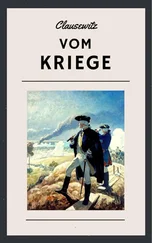An elephant in rut (atyarála) and of 8 aratnis in height shall have equal rations with that of 7 aratnis in height.
The rest of 6 or 5 aratnis in height shall be provided with rations proportional to their size.
A young elephant (bikka) captured for the mere purpose of sporting with it shall be fed with milk and meadow grass.
That which is blood-red (samjátalóhita), that which is fleshed, that which has its sides evenly grown (samaliptapakshá), that which has its girths full or equal (samakakshyá), that whose flesh is evenly spread, that which is of even surface on its back (samatalpatala) and that which is of uneven surface (játadróniká) are the several kinds of physical splendour of elephants.
Suitably to the seasons as well as to their physical spendour, elephants of sharp or slow sense (bhadra and mandra) as well as elephants possessed of the characteristics of other beasts shall be trained and taught suitable work.
[Thus ends Chapter XXXI, “The Superintendent of Elephants” in Book II, “The Duties of Government Superintendents” of the Arthasástra of Kautilya. End of the fifty-second chapter from the beginning.]
CHAPTER XXXII. TRAINING OF ELEPHANTS.
Table of Contents
ELEPHANTS are classified into four kinds in accordance with the training they are given: that which is tameable (damya), that which is trained for war (sánnáhya), that which is trained for riding (aupaváhya), and rogue elephants (vyála).
Those which are tameable fall under five groups: that which suffers a man to sit on its withers (skandhagata), that which allows itself to be tethered to a post (stambhagata), that which can be taken to water (várigata), that which lies in pits (apapátagata), and that which is attached to its herd (yúthagata).
All these elephants shall be treated with as much care as a young elephant (bikka).
Military training is of seven kinds: Drill (upasthána), turning (samvartana), advancing (samyána), trampling down and killing (vadhávadha), fighting with other elephants (hastiyuddha), assailing forts and cities (nágaráyanam), and warfare.
Binding the elephants with girths (kakshyákarma), putting on collars (graiveyakakarma), and making them work in company with their herds (yúthakarma) are the first steps (upa-vichara) of the above training.
Elephants trained for riding fall under seven groups: that which suffers a man to mount over it when in company with another elephant (kunjaropaváhya), that which suffers riding when led by a warlike elephant (sánnáhyopaváhya), that which is taught trotting (dhorana), that which is taught various kinds of movements (ádhánagatika), that which can be made to move by using a staff (yashtyupaváhya), that which can be made to move by using an iron hook (totropaváhya), that which can be made to move without whips (suddhopaváhya), and that which is of help in hunting.
Autumnal work (sáradakarma), mean or rough work (hínakarma), and training to respond to signals are the first steps for the above training.
Rogue elephants can be trained only in one way. The only means to keep them under control is punishment. It has a suspicious aversion to work, is obstinate, of perverse nature, unsteady, willful, or of infatuated temper under the influence of rut.
Rogue elephants whose training proves a failure may be purely roguish (suddha), clever in roguery (suvrata), perverse (vishama), or possessed of all kinds of vice.
The form of fetters and other necessary means to keep them under control shall be ascertained from the doctor of elephants.
Tetherposts (álána), collars, girths, bridles, legchains, frontal fetters are the several kinds of binding instruments.
A hook, a bamboo staff, and machines (yantra) are instruments.
Necklaces such as vaijavantí and kshurapramála, and litter and housings are the ornaments of elephants.
Mail-armour (varma), clubs (totra), arrow-bags, and machines are war-accoutrements.
Elephant doctors, trainers, expert riders, as well as those who groom them, those who prepare their food, those who procure grass for them, those who tether them to posts, those who sweep elephant stables, and those who keep watch in the stables at night, are some of the persons that have to attend to the needs of elephants.
Elephant doctors, watchmen, sweepers, cooks and others shall receive (from the storehouse,) 1 prastha of cooked rice, a handful of oil, land 2 palas of sugar and of salt. Excepting the doctors, others shall also receive 10 palas of flesh.
Elephant doctors shall apply necessary medicines to elephants which, while making a journey, happen to suffer from disease, overwork, rut, or old age.
Accumulation of dirt in stables, failure to supply grass, causing an elephant to lie down on hard and unprepared ground, striking on vital parts of its body, permission to a stranger to ride over it, untimely riding, leading it to water through impassable places, and allowing it to enter into thick forests are offences punishable with fines. Such fines shall be deducted from the rations and wages due to the offenders.
During the period of Cháturmásya (the months of July, August, September and October) and at the time when two seasons meet, waving of lights shall be performed thrice. Also on new-moon and full-moon days, commanders shall perform sacrifices to Bhútas for the safety of elephants.
Leaving as much as is equal to twice the circumference of the tusk near its root, the rest of the tusks shall be cut off once in 2½ years in the case of elephants born in countries irrigated by rivers (nadija), and once in 5 years in the case of mountain elephants.
[Thus ends Chapter XXXII, “The Training of Elephants” in Book II, “The Duties of Government Superintendents” of the Arthasástra of Kautilya. End of the fifty-third chapter from the beginning.]
CHAPTER XXXIII. THE SUPERINTENDENT OF CHARIOTS; THE SUPERINTENDENT OF INFANTRY AND THE DUTY OF THE COMMANDER-IN-CHIEF.
Table of Contents
THE functions of the Superintendent of horses will explain those of the Superintendent of chariots.
The Superintendent of chariots shall attend to the construction of chariots.
The best chariot shall measure 10 purushas in height (,i.e., 120 angulas), and 12 purushas in width. After this model, 7 more chariots with width decreasing by one purusha successively down to a chariot of 6 purushas in width shall be constructed. He shall also construct chariots of gods (devaratha), festal chariots (pushyaratha), battle chariots (sángrámika), travelling chariots (páriyánika), chariots used in assailing an enemy's strong-holds (parapurabhiyánika), and training chariots.
He shall also examine the efficiency in the training of troops in shooting arrows, in hurling clubs and cudgels, in wearing mail armour, in equipment, in charioteering, in fighting seated on a chariot, and in controlling chariot horses.
He shall also attend to the accounts of provision and wages paid to those who are either permanently or temporarily employed (to prepare chariots and other things). Also he shall take steps to maintain the employed contented and happy by adequate reward (yogyarakshanushthánam), and ascertain the distance of roads.
The same rules shall apply to the superintendent of infantry.
The latter shall know the exact strength or weakness of hereditary troops (maula), hired troops (bhrita), the corporate body of troops (sreni), as well as that of the army of friendly or unfriendly kings and of wild tribes.
He shall be thoroughly familiar with the nature of fighting in low grounds, of open battle, of fraudulent attack, of fighting under the cover of entrenchment (khanakayuddha), or from heights (ákásayuddha), and of fighting during the day and night, besides the drill necessary for such warfare.
Читать дальше












